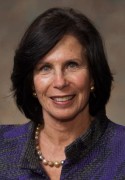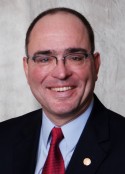
The Affordable Care Act, better known as Obamacare, is scheduled to take full effect in early 2014. The legislation is supposed to increase the number of people with health insurance, and thus perhaps create new demand for healthcare and doctors at a time when some parts of the country, including California’s Central Valley, are reporting a shortage of care and physicians. In advance of the Zócalo event, “Does Bakersfield Need More Doctors?,” we posed the following question to healthcare experts: Will the Affordable Care Act create a nationwide doctor shortage, and if so, what can be done to prevent it?
Gail Wilensky
The shortage could be serious in areas with newly insured patients and laws that restrict non-doctors

No, the ACA can’t be blamed for creating a shortage—but some areas of the country could find many more people seeking care than the number of physicians and nurses available to provide care.
Current estimates are that as many as 30 million of the currently uninsured may get coverage from an expanded Medicaid program or through subsidized private insurance in newly created insurance exchanges. This is a large number of newly insured individuals, some of whom may have pent-up demand for care as a result of being without insurance for long periods. They will also be clustered in certain geographic areas—especially in the South and Southeastern states that have had relatively large numbers of people without private insurance.
These concentrations of newly insured are the geographic areas most likely to experience healthcare shortages—particularly in the short term and especially for primary care services. Many of these states also have some of the most restrictive “scope of practice” laws, which limit the ability of people who aren’t physicians to provide various types of healthcare. Such laws will exacerbate the shortages.
If these issues are not addressed in some way before 2014, it is likely that emergency rooms will find themselves yet again the providers of last resort care. That burden will make it harder to provide emergency room services for individuals with real emergency care needs.
It is urgent that states begin to plan how best to provide clinically appropriate primary care with differing mixes of healthcare professionals. The military has traditionally used a wider mix of healthcare professionals than is usually seen in private practice, and its delivery strategies may be instructive. Community and rural health centers are also examples of delivery systems that are less physician-centric than traditional private practice. 2013 is not too early for states and local communities to begin taking actions to avoid the obvious shortages that will otherwise occur.
Gail Wilensky is an economist and a senior fellow at Project HOPE, an international health foundation. She is former director of Medicare and Medicaid.

As a nation, our population and our lifespans are growing. Both trends increase the need for more healthcare. Even without the ACA, the projected doctor shortage nationwide totaled 64,000 physicians.
But the increased demand for services due to the ACA’s health insurance expansions will indeed exacerbate this trend, as pent-up demand among the newly insured will fuel a surge of utilization during the first few years. Estimates project that an additional 26,000 doctors nationwide will be needed to meet the increased demand. In California, we have about 7 million uninsured people, and about eight in ten will be eligible, beginning in 2014, for either the new Medicaid expansion or newly available private coverage through Covered California (the state’s health insurance exchange).
Nearly 40 percent of the uninsured didn’t see a doctor even once in the past year, compared to only 13 percent of those with insurance. The uninsured also report much higher rates of delaying healthcare that they need; it’s very likely that once they have health coverage, their rate of visiting a doctor will grow to match that of the insured.
The ACA anticipated this increased need and included financial incentives for primary care physicians to accept Medicaid for the first year of the expansion and greater support for graduate medical education. Both of these steps are important and necessary, but insufficient.
What’s needed is a systemic overhaul of financial incentives and workforce management. We need to increase the pay and training of both primary care doctors and other healthcare professionals, and allocate technological resources that help them reach patients outside of a clinical setting to provide better care management for chronic illnesses. A system with this focus would increase our healthcare workforce using the full potential of everyone’s skill set, including physicians.
Shana Alex Lavarreda, PhD, MPP, is a Research Scientist and Director of the Health Insurance Studies program at the UCLA Center for Health Policy Research.

The U.S. has had a shortage of doctors since long before the Affordable Care Act was drafted into law. Increasing demand on the healthcare workforce has outpaced our inadequate estimates of our real supply of physicians.
We have approximately one doctor for every 500 persons in the United States—but they are not distributed evenly through the country. Some areas, such as Bakersfield, California, are designated as Health Professional Shortage Areas. This means that there are not enough doctors now. And, with millions more insured through the Affordable Care Act, shortages of doctors should become more severe in many parts of the country.
The Affordable Care Act also includes solutions, among them increased funding for primary care physicians, a reallotment of graduate medical education slots, and the establishment of a National Workforce Commission (whose activity has been stalled by a lack of funding; more info here: http://www.washingtonpost.com/national/health/partisan-fights-in-congress-stall-panel-on-primary-health-care-shortage/2011/05/09/AFCKBW2G_story.html).
But more solutions are necessary, and here are two practical ways we could deal with the shortage.
1. Give certain administrative tasks to non-doctors. Doctors spend a great deal of their time doing things that distract from patient care (http://www.nejm.org/doi/full/10.1056/NEJMon0910793). If medical assistants and and office personnel were better employed to help with care coordination and other asks, doctors would be able to see more patients and concentrate on care.
2. Increased utilization of community health workers and peer-to-peer health networks. The best health advocate for a patient is usually a family member or community member; we should engage them early so that a number of issues that land in the emergency room or in doctors’ offices can be dealt with beforehand.
Kavita Patel MD, MS is a Primary Care Physician and Fellow at The Brookings Institution. Follow her on Twitter at @kavitapmd.

Our country was struggling with a primary care physician shortage before passage of the Affordable Care Act, and the increasing number of insured persons with the ACA will only heighten this shortage. This month, the Robert Graham Center for Policy Studies in Family Medicine and Primary Care examined the impact of the ACA, the aging population and overall population growth—and projected a shortage of 52,000 primary care physicians by 2025.
The causes of this shortfall are numerous and complex. According to the Graham Center, greater access to health insurance will increase the need for primary care physicians by 8,000. More importantly, overall population growth will require an additional 33,000 primary care physicians. And that’s on top of an increase in the elderly population that will require an additional 10,000 primary care physicians.
Moreover, our current physician payment system worsens the shortage, by paying for the number of medical services provided instead of for quality of care. These incentives dampen interest in primary care because they widen the income gap between primary care and sub-specialty physicians. This payment gap contributes to medical students’ concerns about repaying six-figure school debt on a lower primary care physician’s income.
These challenges are not insurmountable, and the ACA attempts in many ways to address them. Most importantly, it emphasizes patient-centered medical homes and new methods of payment that reward doctors for quality over quantity.
The act also includes measures to expand the number of medical school graduates entering primary care residencies, and it addresses the income gap by providing a 10 percent bonus for primary care services and increased Medicaid payments.
Studies show that a healthcare system built on robust, high-quality primary care produces better outcomes, lower costs, and most importantly, healthier patients.
We can solve the primary care physician shortage. Americans deserve a healthcare system that provides the right care from the right professional at the right time.
Jeffrey Cain, MD is president of the American Academy of Family Physicians.
Christiane Mitchell
Medical schools are expanding to meet need, but feds need to do more on residency training

Physician shortages were emerging long before healthcare reform became a reality.
A rapidly growing Medicare population and an aging physician workforce (1 in 3 will retire in the next few years) have combined to produce a national doctor shortage of both primary care and specialty physicians. Expanding healthcare coverage to as many as 32 million Americans under the Affordable Care Act (ACA) will accelerate the shortage to more than 90,000 physicians by 2020.
In 2006, the nation’s medical schools took the first step to alleviate the problem by increasing enrollment; they will achieve a 30 percent increase by 2016. However, federal support for the second phase of physician training (supervised residencies) has been frozen since 1997. Congress must increase federal support for residency training to match the increase in medical student graduates. It can’t wait until the shortage worsens, since it takes 3-7 years to complete residencies. Unless Congress acts now, Americans (particularly Medicare beneficiaries who require many more physician services than younger populations) will see the shortage grow and access decline.
Christiane Mitchell is Director of Federal Affairs at the Association of American Medical Colleges.
Lisel Blash
We need creative solutions, including thinking about these problems in terms not of providers, but of healthcare

The ACA will undoubtedly increase the demand for primary care, but meeting that demand requires more creative solutions than simply boosting the number of doctors.
Talk of shortage needs to be put in context. Here’s a bit of good news: the ratio of doctors-per-person in the U.S. is at an all time high. But ratios do not tell the full story: poor and rural areas are already underserved, and health disparities based on race, language, and class continue. As rates of chronic disease skyrocket, many patients require more care. Estimates suggest the typical primary care doctor with a panel of 2,500 patients would need to spend 7.4 hours a day to provide all the recommended preventive care alone.
Much of this is routine screening and care which could be done by others. New team models—which delegate some of these tasks to medical assistants (MAs), nurses, and behaviorists working in coordinated teams with providers—show promise for relieving the burden on doctors and improving care.
Physicians need not be the only providers; physician assistants (PAs) and nurse practitioners (NPs) can serve this role. These professions are easier to scale up and require less training time. In many rural areas in California, physician assistants and nurse practitioners are already filling in where doctors are scarce.
New modalities of care—such as telehealth, school-, work-, and retail-based clinics, and home-based care—push us to think quite literally outside of the box of the traditional doctor’s office.
Technology and new models of practice are creating a less doctor-centric system and confounding our ability to make workforce projections. Perhaps it is time to focus on the distribution and type of care that needs to be provided rather than the type of provider in calculating supply—and start laying the policy and reimbursement foundation to support these changes.
Lisel Blash is a senior research analyst at the Center for the Health Professions at the University of California, San Francisco. Founded in 1992, the Center is one of the oldest and largest healthcare workforce institutes in the US.



